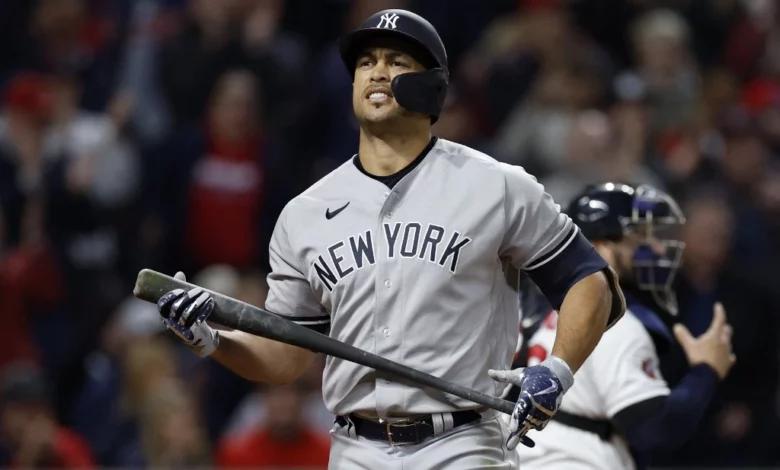Weathering the Storm: Baseball Weather Totals and Early-Season Cold-Weather Overs
Runs Have Been Aplenty So Far

Challenging Wisdom: New Rules Impact Baseball Weather Totals
Conventional wisdom for early-season MLB games — many of which take place in outdoor stadiums in cities where the weather hasn’t warmed up to spring levels just yet — is that the under is a smart play. Usually, pitchers are sharper out of the gate in every new season and the colder weather tends to depress ball flight. That typically results in baseball weather totals being smaller in March and April baseball with totals inching up as the summer months approach (and then dropping back down in the fall).
However, so far in the 2023 MLB season, game run total overs have actually been the way to go. Overall scoring is already up by 0.3 runs per game so far as compared to last season and only four individual teams have hit the under in more than half of their games (the Yankees, Cardinals, Brewers, and Twins). For comparison’s sake in the reverse, just five teams in the 2022 season hit the over in more than half of their games. That’s a clear shift.
Furthermore, in April 2022, teams averaged just 4 runs per game which was the lowest average since 1981. Even with the introduction of the universal DH (and the elimination of pitchers hitting), the league-wide batting average was .231, the lowest in MLB history.
So, it’s clear that something is up with scoring in MLB thus far that has made the offensive environment a much more run-friendly one even with the usual early spring colder weather. Of course, with the MLB standings still featuring such a small sample of games, it could be a weird aberration that will revert to the mean once the calendar turns to May and June. It could also be a result of hitters benefiting from the new rules just as MLB intended.
By instituting the pitch clock, MLB sought to reduce game times and improve the pace of play — which has certainly been the case through two weeks of the new season. But, by also limiting the number of times pitchers can attempt pickoffs and by increasing the size of the bases, it is much easier for runners to steal bases and thus get into scoring position (or get to third base with less than two outs). That alone creates many more run-scoring opportunities as backed up by the MLB stats.
There’s also the issue of the shift or, rather, the removal of it from today’s game. It’s hard to pinpoint just exactly how much of an impact the shift ban has had on run-scoring but it was MLB’s goal for the ban to increase the number of singles that were able to leave the infield, especially those up the middle and in the gap between first and second base. So, one can only assume that it has made some kind of pro-offense difference.
Accordingly, it’s very possible that the baseball weather totals going over so often at the start of the year is not a fluke but could be due to very real changes in the game that could force bookmakers to functionally change how they set single-game over/under. This, coupled with starting pitchers continuing to not go as deep into games, makes it much more variable on a game-to-game basis what the totals are going to be.
It used to be that totals might be 5.5 or 6 runs for a strong pitching matchup but, now, with the many members of teams’ bullpens pitching a larger portion of games, the importance of the once-almighty probable pitcher matchup is decreased. As a result, we are routinely seeing over/under totals of 8, 8.5, and 9 runs for “normal” games that aren’t at the highly elevated Coors Field or games between one contender and one cellar-dweller.
If you want to take advantage of the baseball weather totals before the sportsbooks are fully able to adapt, you have to throw out the old adage about cold weather and instead face the new offensive environment that baseball is in with the new rules.
Pitchers almost certainly will adjust — by beginning to use the pitch clock to their advantage in a way and by needing to hold runners on more effectively — but, for the time being, the batters have the advantage so you need to strike while the iron is hot.
Also, there’s the possibility that MLB decides that the new rules went too far in promoting offense and could try to scale them back — maybe introducing one more pickoff attempt per at-bat — at some point this year but that wouldn’t be likely for at least a few months.
Follow us on TwitterCan’t get enough? Here’s more!
- MLB Tuesday Recap: The Home Favorites Paid Off Rather Well On a Busy Tuesday
- First Five Innings Odds: Favorites Still Doing Well
- MLB Monday Results: Tampa Bay Continues to Make History With Unbeaten Start
- MLB Weekend Betting Recap: Overs Have Stellar Showing
- Tampa Bay Rays Win Streak Reaches 6 Games

